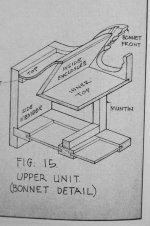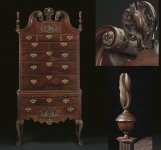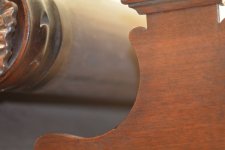Hi,
I am in the process of designing and constructing a Phila. Highchest with a full bonnet and I have a question. On several pieces that I've studied, at the top of the gooseneck, the bonnet seems to have a full roll front to back. I was wondering how that construction was accomplished? Since the radius of the turn is very tight at the top, it doesn't seem likely that the makers were able to piece that form with thin wood as was done on other surfaces of the bonnet. Any assistance or suggestions would be most appreciated. If a photo of this detail would be helpful, I have several that i could post.
Thanks for your interest and help.
Frank Duff
Monkton, MD
I am in the process of designing and constructing a Phila. Highchest with a full bonnet and I have a question. On several pieces that I've studied, at the top of the gooseneck, the bonnet seems to have a full roll front to back. I was wondering how that construction was accomplished? Since the radius of the turn is very tight at the top, it doesn't seem likely that the makers were able to piece that form with thin wood as was done on other surfaces of the bonnet. Any assistance or suggestions would be most appreciated. If a photo of this detail would be helpful, I have several that i could post.
Thanks for your interest and help.
Frank Duff
Monkton, MD



